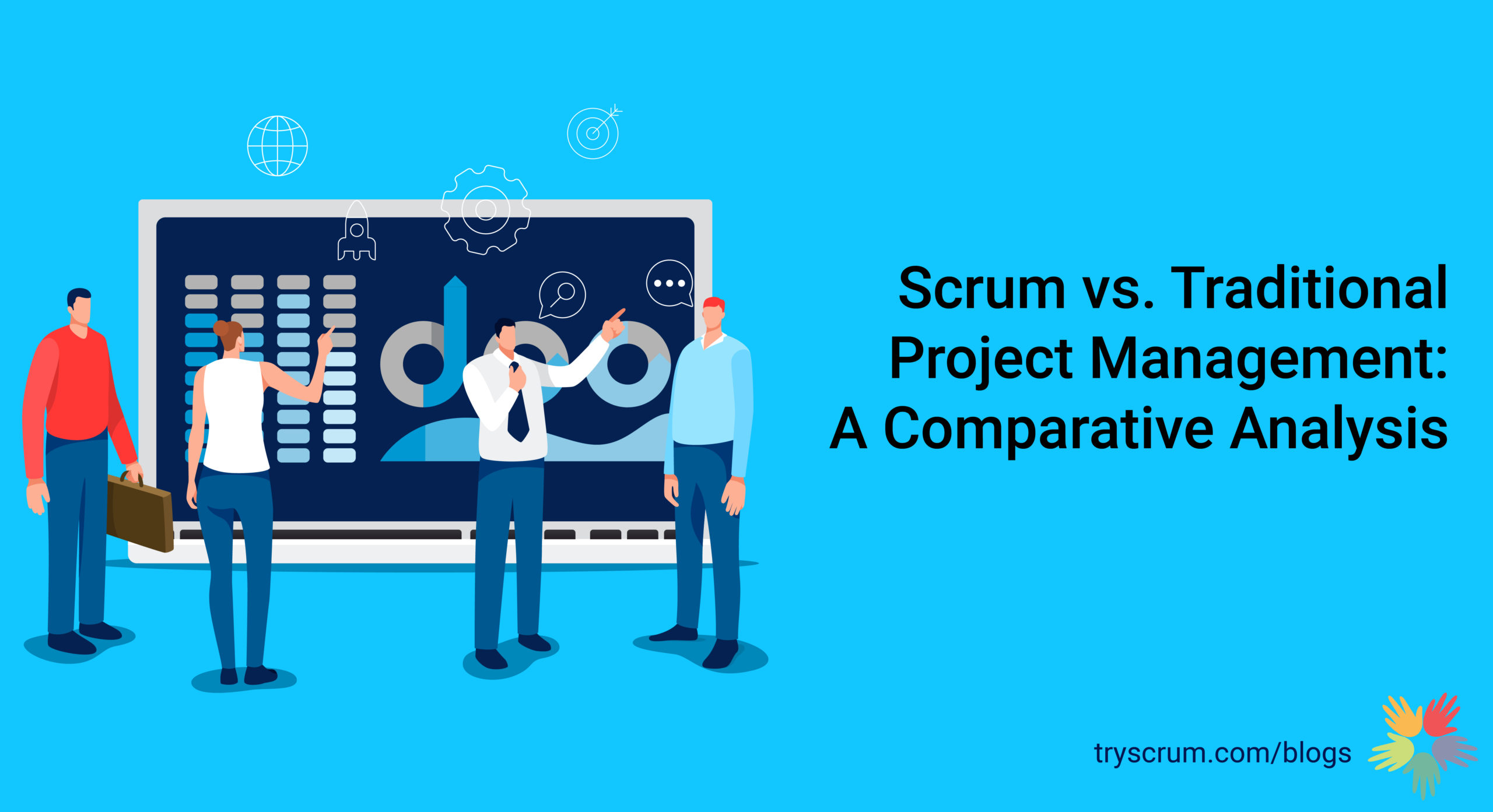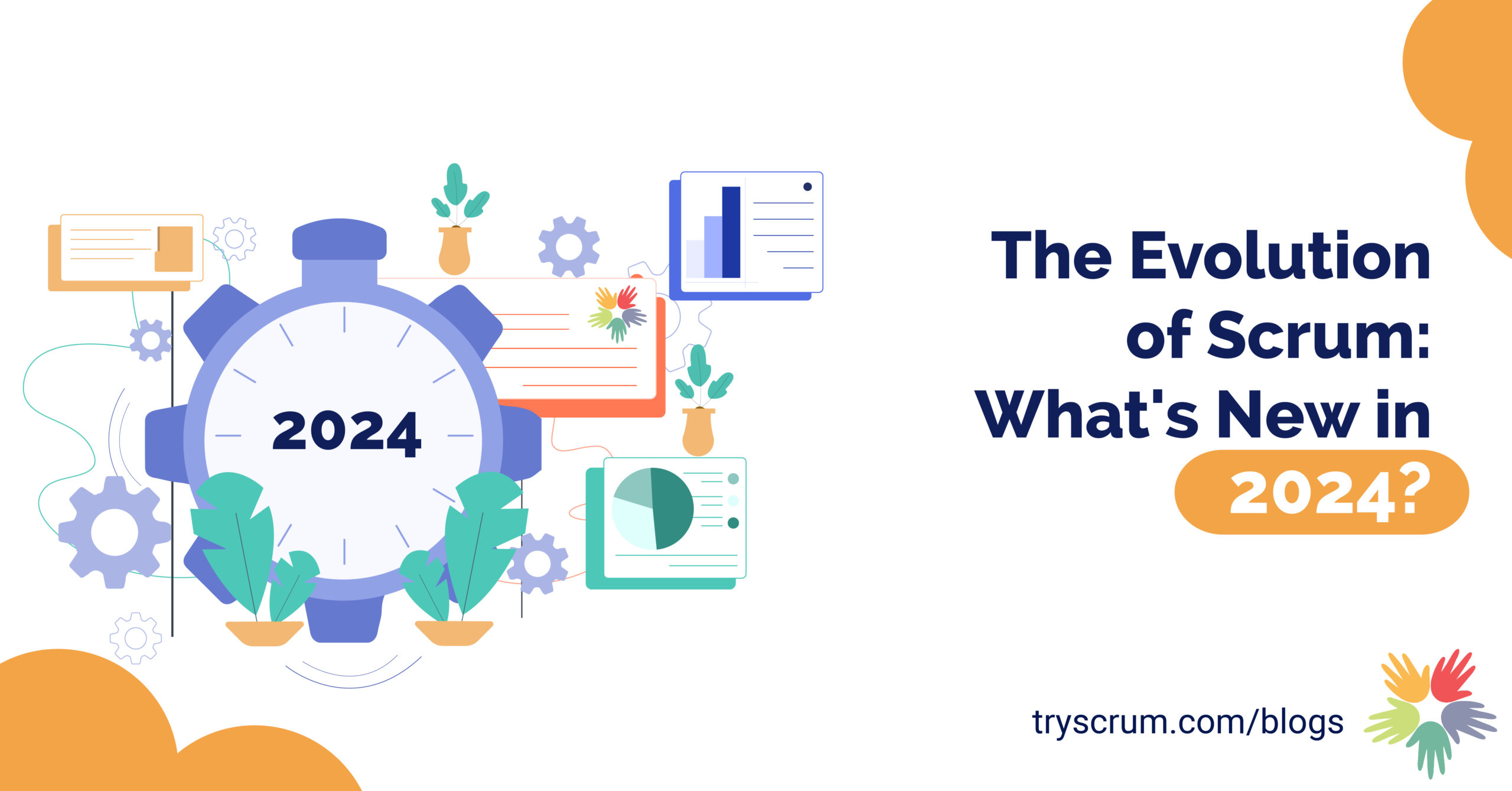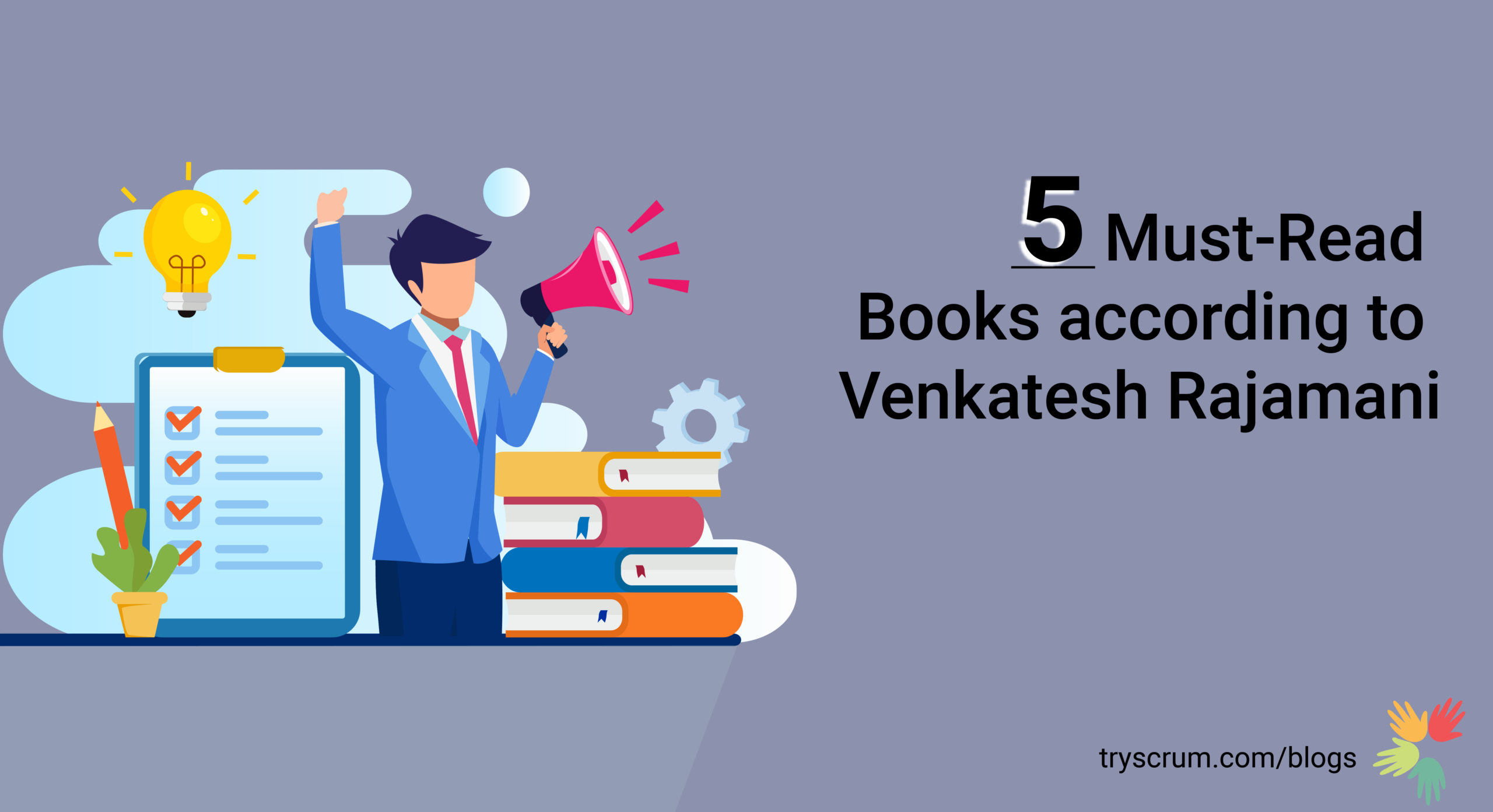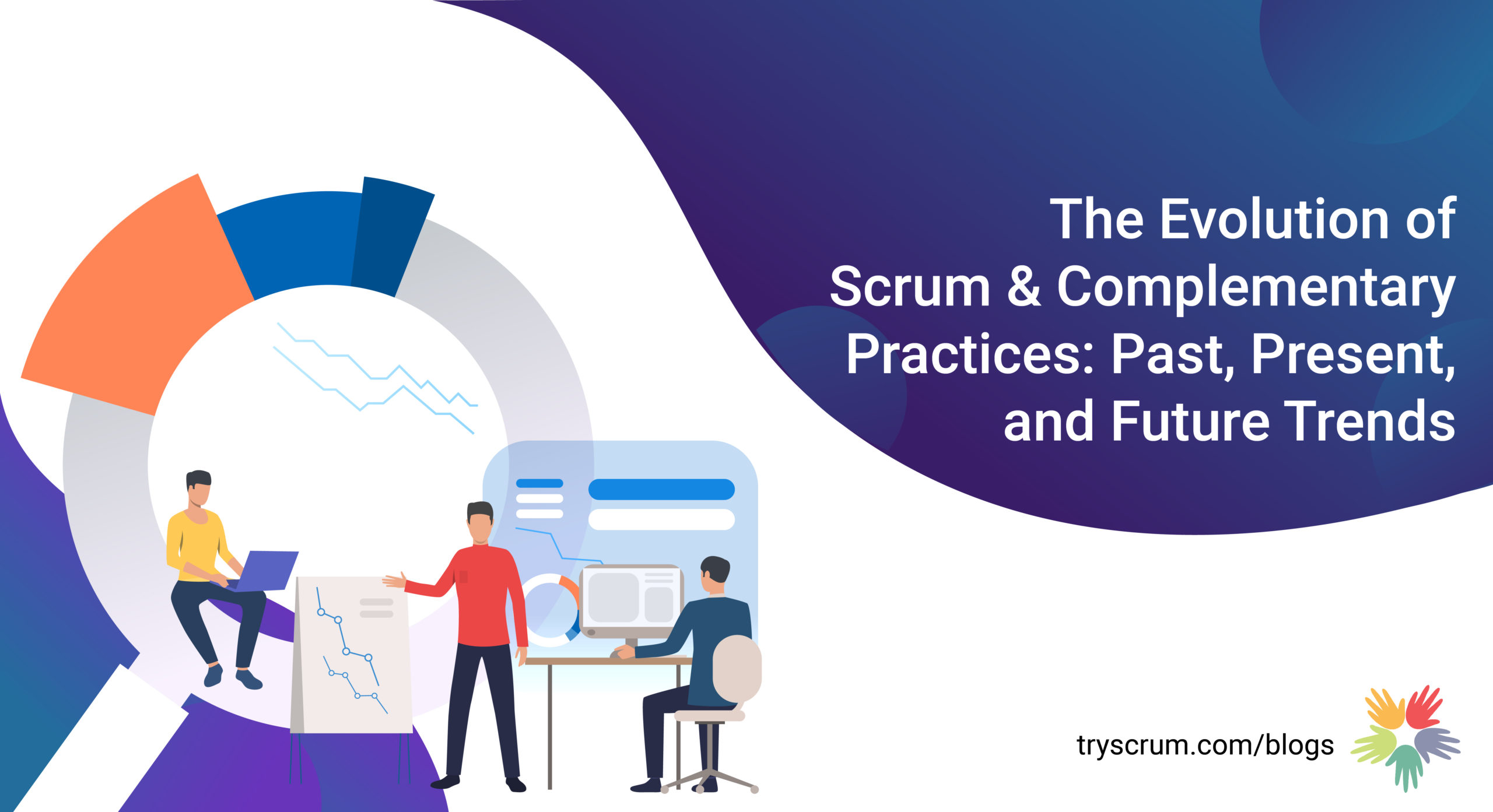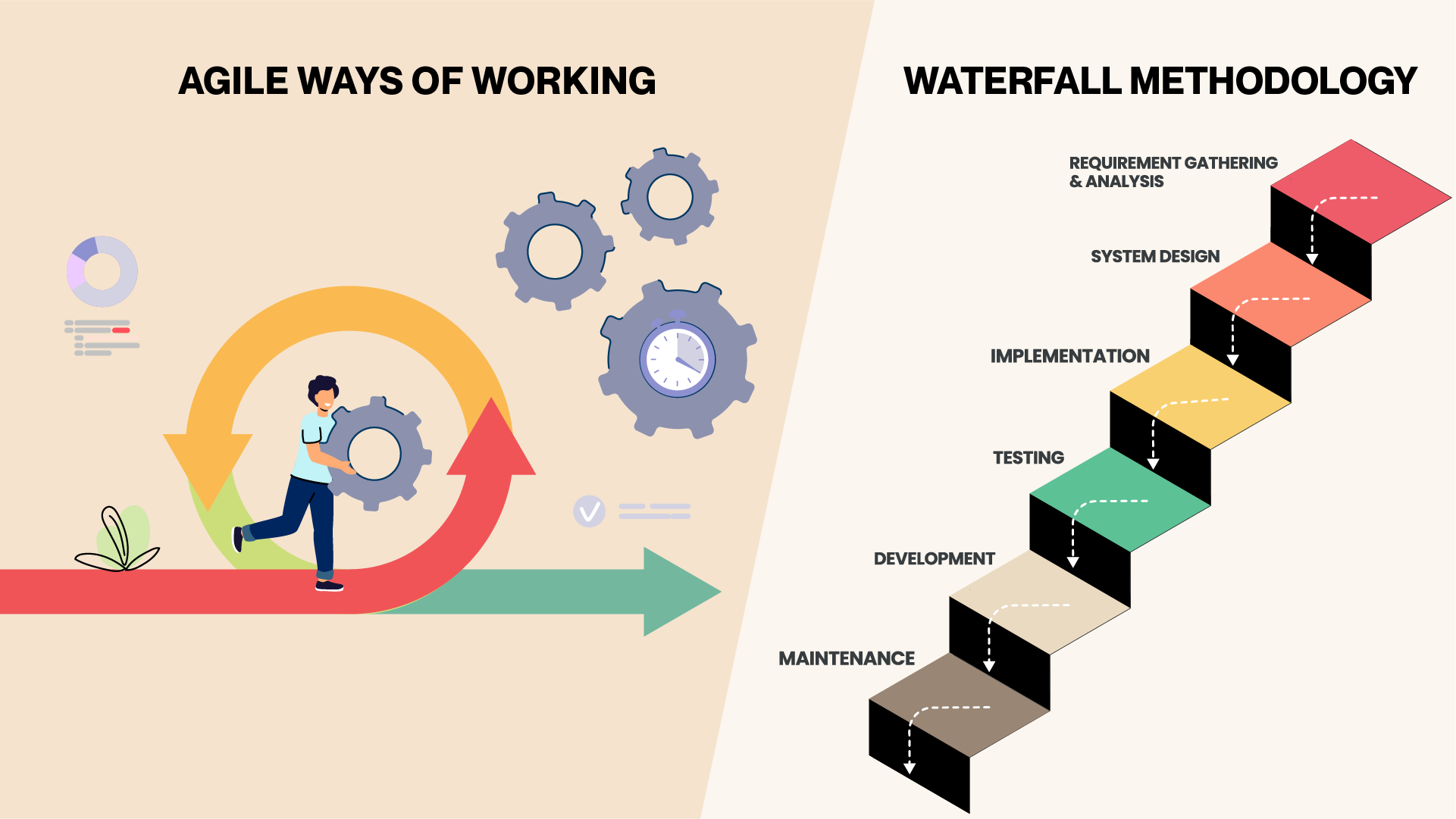
What Differentiates Agile From The Waterfall Methodology?
The significant difference between these two well-known project management or product development methodologies is that in the scenario of Waterfall, it is a linear system of working in which each project phase is prior to the team, and only when the task is over, then they move on to the next. However, on the other side in, in Agile, the team is required to operate simultaneously on different project stages.
Both of them are widespread in the software development field and withstand accurately as well, so let’s snoop into a brief description of them.
Agile Methodology
In this, the project management involves working in iterations. This is done by breaking up the project into several phases so that constant association with clients and stakeholders can be done to present the continuous improvement at every stage. In this, the cycle process involves the planning, executing and evaluating steps. There are values that Agile follows up in which individuals and interactions are before the methods and the tools—in other preference, working software prior to comprehensive documentation. And last is Client collaboration over agreement negotiation.
Here it requires team initiative and short duration deadlines to work on cause the team works on different tasks.
In Agile, the group uses the task’s guide instead of a task supervisor. This can entrust the group to be more productive and demand a better self-directed group.
Assets to Agile Methodology:
- Short-term timelines promote creativity and effectiveness.
- There is surplus Flexibility to modify task directives and experimentations with continued directions.
- The methodology is customer-facing, which indicates that the company stakes improvement and integrates feedback into the method.
Liabilities of Agile Methodology:
- Because group associates are operating on numerous stages at a period, there is conceivable for overlapping or excessive measure expended on the last steps if an earlier stage must be altered.
- Deliverables are not a condition to advance to the subsequent stage. It can be tougher to confirm the whole group is on the exact messenger— particularly if it’s a considerable group with diverse divisions. The task period is additionally contesting to choose from the beginning, and it is even further unsuspecting to switch.
Waterfall Methodology
The second is the Waterfall Methodology which is a sequential process.
It’s a non-iterative one in which working in cycles with constant improvement isn’t supported. Here, first, you have to finish a stage only then move on to the next step with the outcomes is possible. The resulting team goes under the whole project process from initiation to planning, then execution, and at the end, completion. And ideally, then you can collect and assemble all the concluded deliverables into a finalized task or derivative.
This method originated in the construction and manufacturing industries. Here, progress primarily sails in one direction, making it a flexible technique.
The order of the phases is:
- System and software requirements
- Analysis
- Design
- Coding and integration
- Testing and debugging of effects
- Operations include installation, support and maintenance, as well
This way, all this is systematized.
Assets to Waterfall Methodology:
- Provide a tangible objective of the task from beginning to end.
- The group specifies task prerequisites earlier on, which can preserve duration.
Liabilities of Waterfall Methodology:
- Every task stage must be achieved before advancing to the subsequent step, and the procedure can be elongated.
- You might not acknowledge a problem with a stage until you have advanced to the subsequent one. This would imply reaching heretofore via per measure and reviewing where the misstep or mistake happened, which can be a convenient procedure.
- The Waterfall methodology demands that you abstract the task from beginning to end before starting. This accomplishes plenty of Flexibility or modification. Further, it can evolve into difficulties if the stakeholders clash on the task’s image and don’t discover it until it is accomplished.
Let’s have a concise comparison between them on a few grounds:
- Timeline: In the case of Waterfall, it has a specified timeline. The concept is that the beginning and end of the task are already mapped release from the start. And in the scenario of Agile, it is a lot better easygoing and accounts for testing with additional suggestions. Instead of a specified timeline, the plan adjusts as the task advances.
- Customer Involvement: Once the end goal is established, Waterfall does not involve the client or project owner during the process, apart from specific check-ins or for deliverables. The project’s duration is delineated initially, so incorporating client critique is not a continuing aspect of the process. And in the scenario, an essential component of Agile is containing customers in the scheme outcome at every stage. The Agile Manifesto says, “Our most elevated preference is to benefit the client via earlier and continued delivery of practical software.” Thus, enterprise proprietors are predicted to be concerned and provide feedback to the software development group as they advance via the various stages of the task.
- Flexibility: Waterfall is not as easygoing as Agile because every stage must be completed entirely before proceeding to the subsequent stage. The task is also schemed out along of period, creating this managing design objective for groups with an explicit image of where they are captained from beginning to end. On the other hand, Flexibility is constructed into the Agile method. Agile worths quick shots of job, which are called sprints. The procedure accommodates acclimating to diverse approaches, including new knowledge consistent at the latest step of the task.
